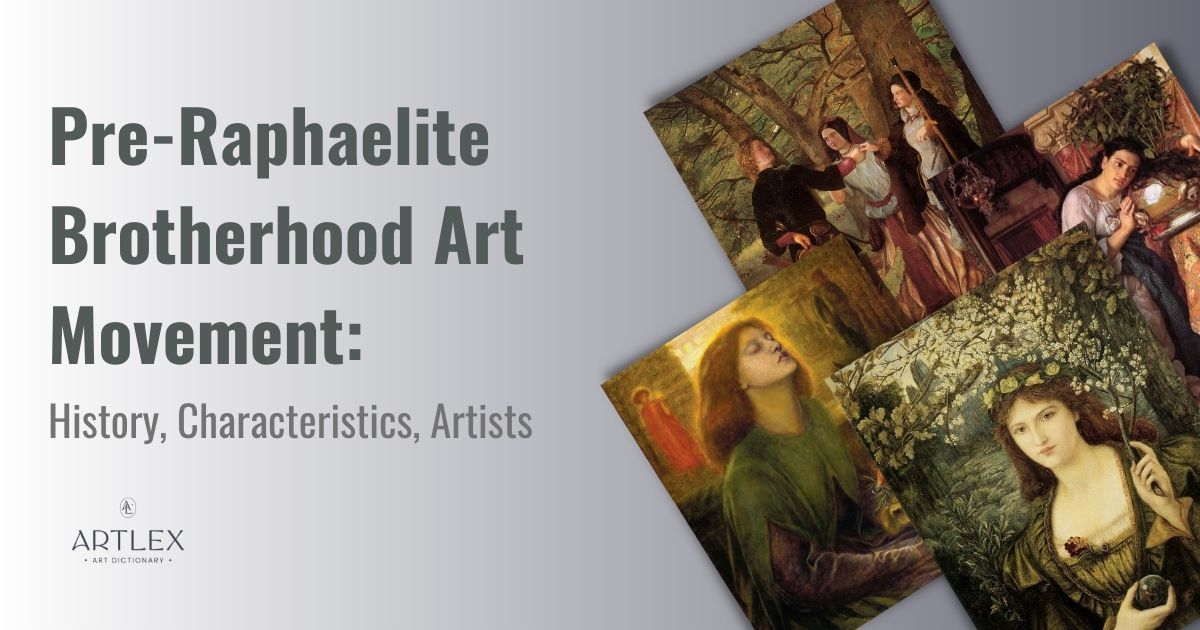
Pre-Raphaelite Brotherhood Art Movement: History, Characteristics, Artists
The Pre-Raphaelite Brotherhood was an art movement founded in 1848 by a group of English artists, poets, critics, and playwrights. The artistic movement sought to emulate early Italian art and was opposed to the classical compositions that Raphael made popular.
The founders of the Pre-Raphaelite Brotherhood were William Holman Hunt (1827-1910), Dante Gabriel Rosetti (1828-1882), and John Everett Millais (1829-1896). Other members of the Pre-Raphaelite movement include: William Michael Rossetti, Frederic George Stephens, James Collinson and Thomas Woolner. The Pre-Raphaelite Movement was founded in 1848 when the three founders Hunt, Rosetti, and Millais met at John Millais’s parents’ house in London, England.
Pre-Raphaelite art admired the detail, color, and composition of quattrocento art. The Pre-Raphaelites did not like the art of Raphael and sought to emulate earlier Italian art. They were opposed to the classical compositions and poses that Raphael made popular. The former leader of London’s Royal Academy, Sir Joshua Reynolds (1723-1792), had promoted classical art. The Pre-Raphaelites, however, painted biblical subjects, the natural world around them, and everyday life. This group of young artists formed a secret society known to them as the PRB. In fact, artists like Dante Gabriel Rossetti often signed PRB on his paintings. Pre-Raphaelite work was similar to medieval art in a number of ways, including the reliance on medieval literature, fourteenth century composition and pose, and the faithful study of nature.
Pre-Raphaelitism suggested artists study nature attentively. The Pre-Raphaelite art circle sought to imitate nature. Mimesis and history painting were central tenets of their art. The Pre-Raphaelites produced a periodical, first called The Germ and later Art and Poetry. Publication of The Pre-Raphaelite’s journal, The Germ, began in 1850 and was intended to advance their ideas across the artistic community. The group disbanded in 1853, but their influence lived on in artists that followed such as Edward Burne-Jones (1833-1898), Ford Madox Brown (1821-1893), and William Morris (1834-1896).
Pre Raphaelite Brotherhood Artwork includes many stunning works, including: “Ophelia” by John Everett Millais, “Bocca Baciata” by Dante Gabriel Rosetti, “The Awakening Conscience” by William Holman Hunt, “Dante’s Dream” by Dante Gabriel Rossetti and “Christ in the House with his Parents” by John Millais. Female Models of the Pre-Raphaelite works include Elizabeth Siddal and Jane Morris, as well as others.
Pre-Raphaelitism was influenced by early Renaissance art and Italian artists of the Quattrocento. The Quattrocento referred to a period of art in Italy between 1400-1499 and encompassed art prior to Michelangelo (1475-1564) and Raphael (1483-1620). These artists and the mannerists of the mid-late Renaissance had a mechanical approach to figuration. The Pre-Raphaelites were influenced by the writings of English Romantic poets Lord Alfred Tennyson (1809-1892) and John Keats (1795-1821).
Pre-Raphaelite works influenced many artists of the late nineteenth century, including: William Morris, Edward Burne Jones, Henry Wallis (1830 -1916) and Walter Howell Deverell (1827–1854). John Collier (1850-1934), Arthur Hughes (1832-1915), James McNeill Whistler (1834-1903), Lawrence Alma-Tadema (1836-1912) and Frank Bernard Dicksee (1853-1928). Pre-Raphaelite circle artworks can be found in the Lady Lever Art Gallery, the Delaware Art Museum, the Victoria and Albert Museum, the Manchester Art Gallery, the Birmingham Museum and Art Gallery, and Tate Britain.
- Influences on Pre-Raphaelitism:
- Inspired by Quattrocento art (1400-1499), British Romanticism, and the German Nazarene Movement.
- Influenced by Romantic poets like John Keats and Lord Alfred Tennyson.
- The movement emphasized nature, symbolism, and medieval literature.
- Key Artists and Works:
- William Holman Hunt: Known for The Lady of Shalott and The Awakening Conscience.
- Dante Gabriel Rossetti: Famous for Bocca Baciata and Beata Beatrix.
- John Everett Millais: Renowned for Ophelia and Christ in the House of His Parents.
- Other prominent members included Ford Madox Brown, Edward Burne-Jones, and William Morris.
- Artistic Characteristics:
- Detailed realism, vibrant colors, tight brushwork, and symbolic content.
- Rejection of the loose, darkened style using bitumen promoted by academic painters like Sir Joshua Reynolds.
- Nature was central, with artists working directly from natural settings to depict accurate details.
- Pre-Raphaelite Women and Models:
- Women played significant roles as models and artists, including Elizabeth Siddal, Jane Morris, and Fanny Cornforth.
- Elizabeth Siddal was both a model and poet, famously depicted in Ophelia by Millais and Beata Beatrix by Rossetti.
- Jane Morris, wife of William Morris, modeled for several works and inspired many Pre-Raphaelite paintings.
- Symbolism and Themes:
- Common themes included biblical narratives, Arthurian legends, nature, love, morality, and mythology.
- Works often incorporated elaborate symbolism, such as flowers representing emotions and virtues (Ophelia, The Awakening Conscience).
- Cultural and Artistic Influence:
- Influenced later movements such as the Arts and Crafts Movement (led by William Morris), the Aesthetic Movement, and Symbolism.
- The Brotherhood emphasized the intersection of literature, art, and social critique, impacting decorative arts and modern art movements.
- Legacy and Criticism:
- The PRB faced initial criticism for its unconventional depictions of biblical subjects and realism (Christ in the House of His Parents was denounced as blasphemous).
- Critics like John Ruskin supported the group, while others, such as Charles Dickens, opposed it.
- Though the Brotherhood officially disbanded in 1853, its principles continued to influence art and literature.
Pre Raphaelite Brotherhood (PRB) History
The Pre-Raphaelite Brotherhood was founded in 1848 by the three original members: William Holman Hunt, Dante Gabriel Rosetti, and John Millais. The Pre-Raphaelites expanded to include other members. These three artists, who first met at the Royal Academy, came together in September 1848 at John Millais’s parents’ house. At what would be the first meeting of the Brotherhood, in September 1848, Dante Gabriel Rossetti’s brother, William Michael Rossetti, wrote down the four key components to Pre-Raphaelitism. The brotherhood’s early doctrines were as follows:
- To have genuine ideas to express;
- To study Nature attentively, so as to know how to express them;
- To sympathize with what is direct and serious and heartfelt in previous art, to the exclusion of what is conventional and self-parading and learned by rote; and
- Most indispensable of all, to produce thoroughly good pictures and statues.
After the three, several other young painters and poets joined the group. Other members of the Pre-Raphaelites include: William Michael Rossetti, Frederic George Stephens, James Collinson and Thomas Woolner. The Pre-Raphaelites operated like a secret society. Members wrote PRB as a mystery or coded message on to their paintings. The Pre-Raphaelite brotherhood believed in the intersection of fine art, literature, religion, poetry, modern and social problems.
The brotherhood created a Pre-Raphaelite journal called The Germ, so named because it was intended to be a seed or blossom that would reproduce and further their influence across art. The Germ was a publication featuring book reviews, poetry, and art banter. It only ran for four issues in 1850.
Unlike the Academy, where women had yet to be accepted, the Pre-Raphaelite circle happily accepted and promoted the art of women artists. The Pre-Raphaelites allowed women into their circle including: Emma Sandys (1843-1877), Joanna Mary Wells (1831-1861), Evelyn de Morgan (1855-1919) and Marie Spartali Stillman (1844-1927). Pre-Raphaelite women artists created art that shared characteristics with their male counterparts. A good example is Stillman’s work “Madonna Pietra degli Scrovegni” (1884), because while it clearly takes influence from art of the male Pre-Raphaelites, it also deviates in the finish of the canvas and the darker tones. This shows that women artists were encouraged to develop their own styles.
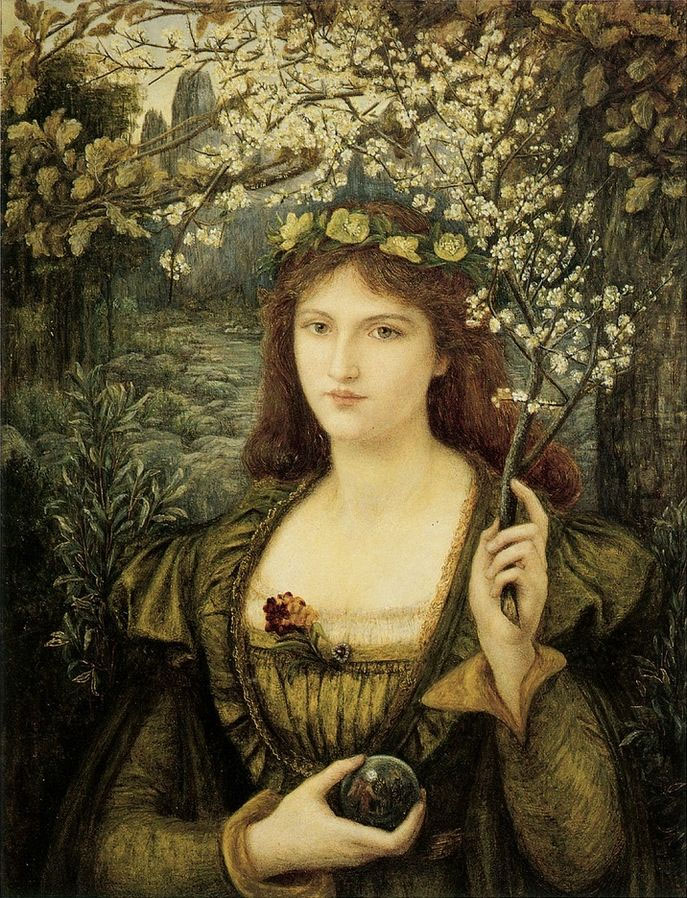
The Pre-Raphaelites did not like formulaic academic art and amassed supporters like art critic John Ruskin (1819-1900). John Ruskin became their most supportive critic, while Charles Dickens pushed back against them. Ruskin liked the earnest and sincere nature of the art and realism that the Pre-Raphaelites supported. The public did not respond well to Pre-Raphaelite paintings because they thought the characters were ugly, such as in Millais, “The Girlhood of Mary Virgin.” In the image, Millais created a sickly-looking flame-haired Mary, who the devout Victorians saw as blasphemous as it altered the “perfect” image of the Virgin Mary.
Eventually, the group split into two loosely associated groups. The first, the realists followed Millais and Hunt. The second loosely associated group were those artists that responded to the more medieval qualities that Rossetti eschewed. For instance, Rossetti’s later portrait of his wife Elizabeth Siddal (1829-1862), “Beata Beatrix,” features a golden halo of light around the sitter as if her portrait took place in the medieval age.
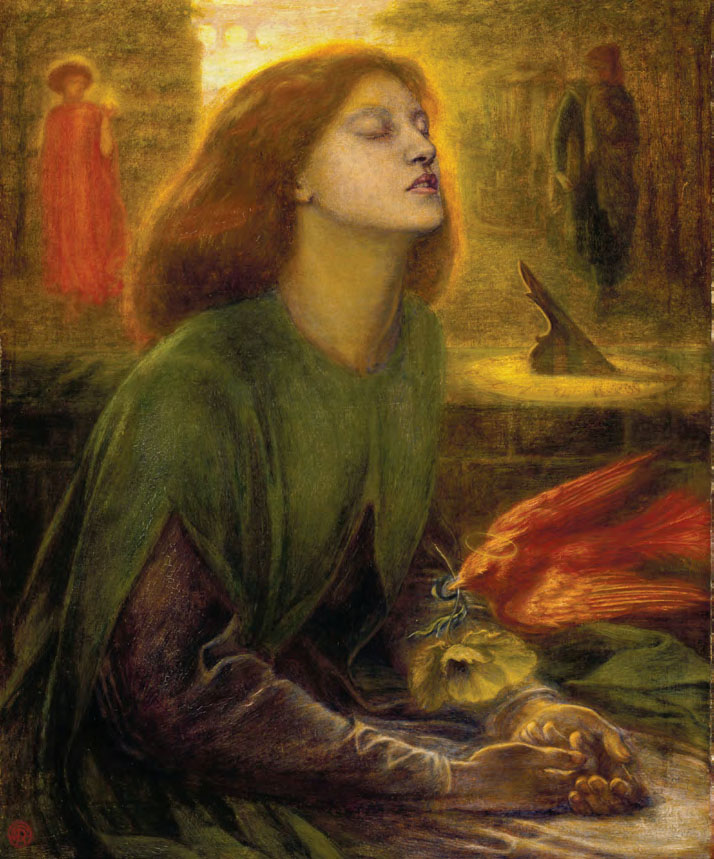
Though the Brotherhood officially disbanded in 1853, the influence of the Pre-Raphaelites lived on in many artists and artistic movements. Some members, like John Collinson, left the group early because of the worry of religious backlash. Others continued to utilize the Pre-Raphaelite style in their art and works well past 1853.
Pre-Raphaelite Brotherhood (PRB) Founders
Pre-Raphaelite Founders include: William Holman Hunt, Dante Gabriel Rosetti, and John Everett Millais.
William Holman Hunt
William Holman Hunt was born in 1827 in London, England. Hunt studied at the Royal Academy, but he rebelled against the teachings of Sir Joshua Reynolds (1723-1792) and alongside Rossetti and Millais, founded the Pre-Raphaelite group. Hunt frequently painted works inspired by poems. Hunt’s “Isabella” and “The Lady of Shallot” are both based on poems. “Isabella” is based on a poem by John Keats and “The Lady of Shallot” is based on a lyrical balled by Lord Alfred Tennyson. Hunt died in 1910.
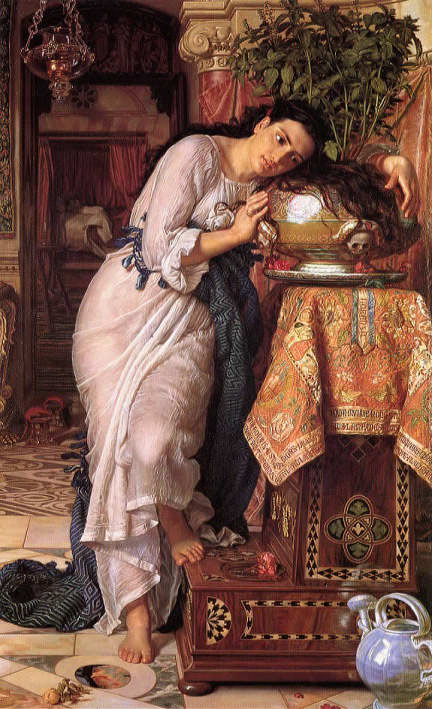
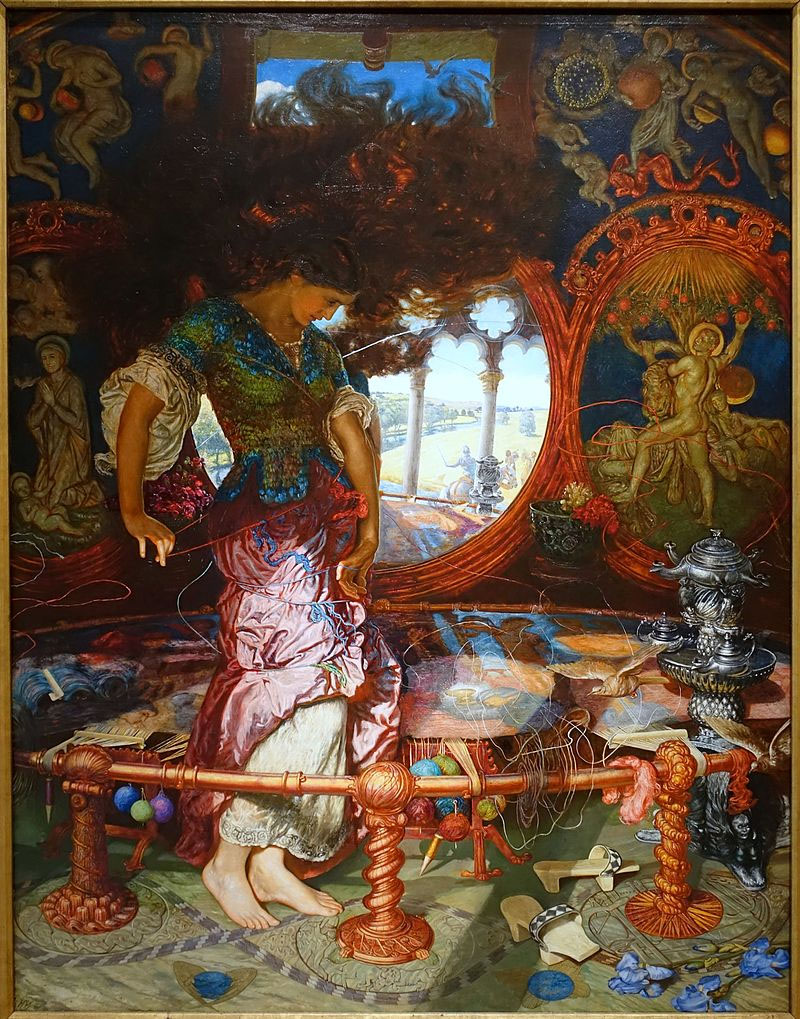
Dante Gabriel Rossetti
Dante Gabriel Rossetti was born in London, England in 1828. Rossetti was one of the English Pre-Raphaelite painters as well as a poet. Rossetti attended the antique school at the Royal Academy and took art classes with Ford Maddox Brown. Rossetti married a model of his named Elizabeth Siddal. Rossetti died in 1882 in Birchington-on-sea, Kent, England. Rossetti’s famous paintings include his series of paintings telling the story of the Virgin Mary from the Bible. For instance, Rossetti’s “Girlhood of Mary Virgin” depicts Mary as a little girl. Other famous paintings by Rossetti include “The Day Dream” featuring Jane Morris as his model.
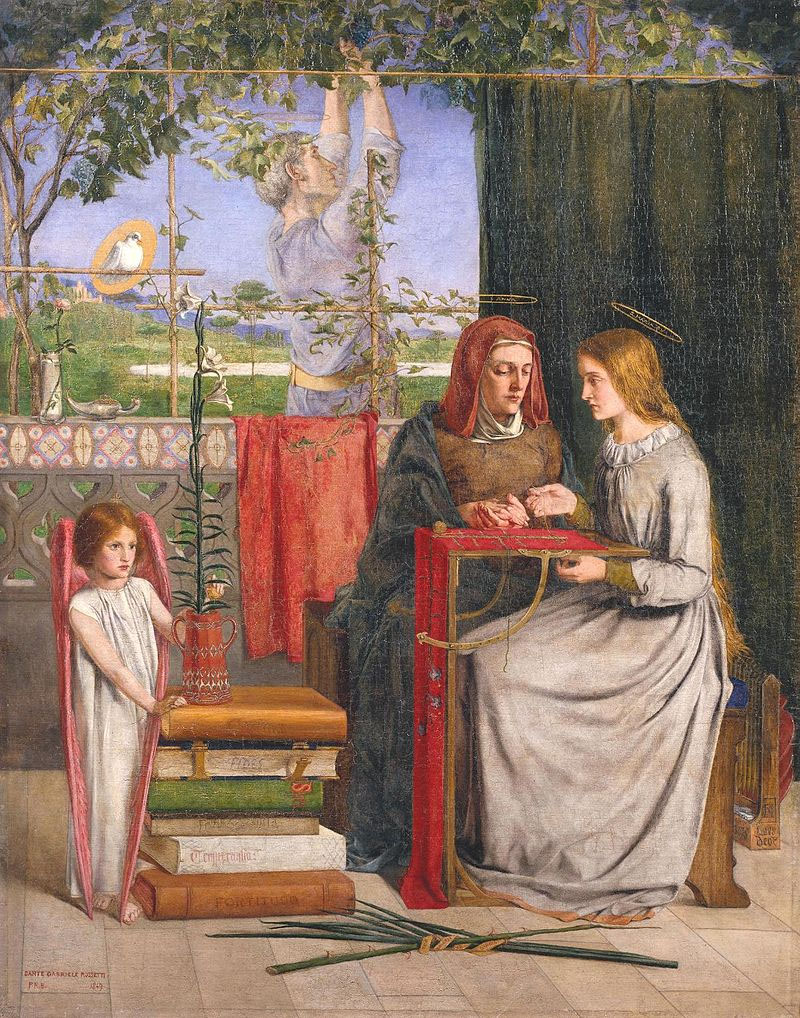
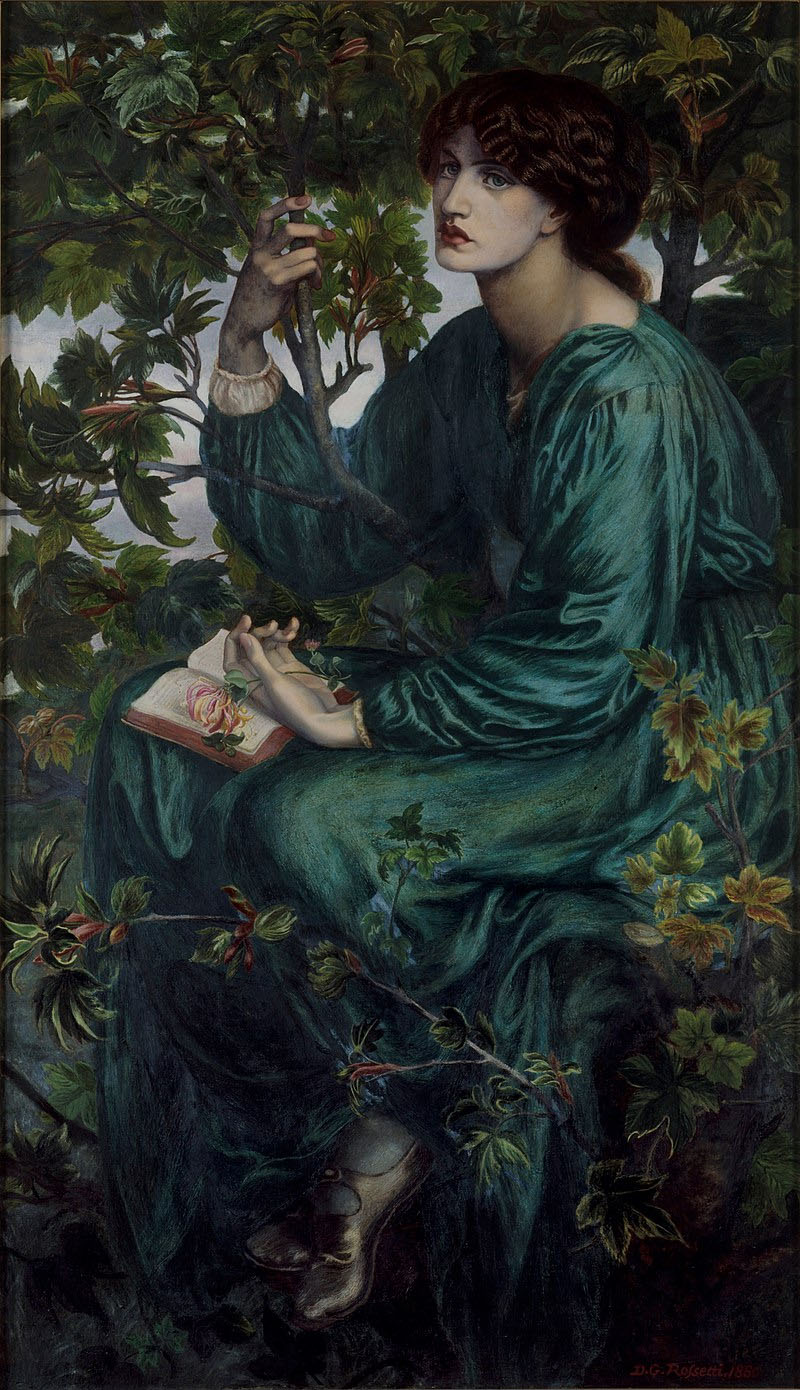
John Evert Millais
John Everett Millais lived from 1829-1896. Millais was born in Southampton, Hampshire in England and died in London, England. Millais was one of the founders of the Pre-Raphaelites and is most famous for his paintings “Ophelia” and “Christ in the House of his Parents.” Millais was elected to the Royal Academy of the Arts in 1853. Millais focused less on the medieval influence and more on the realist and scientific aspects of Pre-Raphaelite work, eventually abandoning the movement altogether for religious realism. Millais influence on British art is undeniable.
Pre Raphaelite Brotherhood (PRB) Members
Other members of the Pre-Raphaelite circle include: William Michael Rossetti, Frederic George Stephens, James Collinson, Ford Madox Brown, John William Waterhouse and Thomas Woolner. Also, an important member of the group who was not a painter was esteemed critic John Ruskin.
William Michael Rossetti (1829-1919) was the brother of Dante Gabriel Rossetti. Rossetti was a writer and critic who grew up in London, England with Italian immigrant parents. Rossetti served as the editor for the Pre-Raphaelite Journal, The Germ.
Frederic George Stephens (1827-1907) was born in Walworth in London. Stephens entered the Royal Academy in 1848 as a British Painter. Stephens befriended Rossetti and Millais and became part of the Pre-Raphaelites. Stephens was not happy with his own artistic abilities and stopped painting in order to become an art critic.
James Collinson (1825-1881) was another student of the Royal Academy. Collinson studied alongside Rossetti and became involved with the Pre-Raphaelites. Collinson was a devout Christian and produced many works with biblical subjects. Collinson also contributed writings to The Germ. Collinson is known for his work “The Empty Purse” (1857).
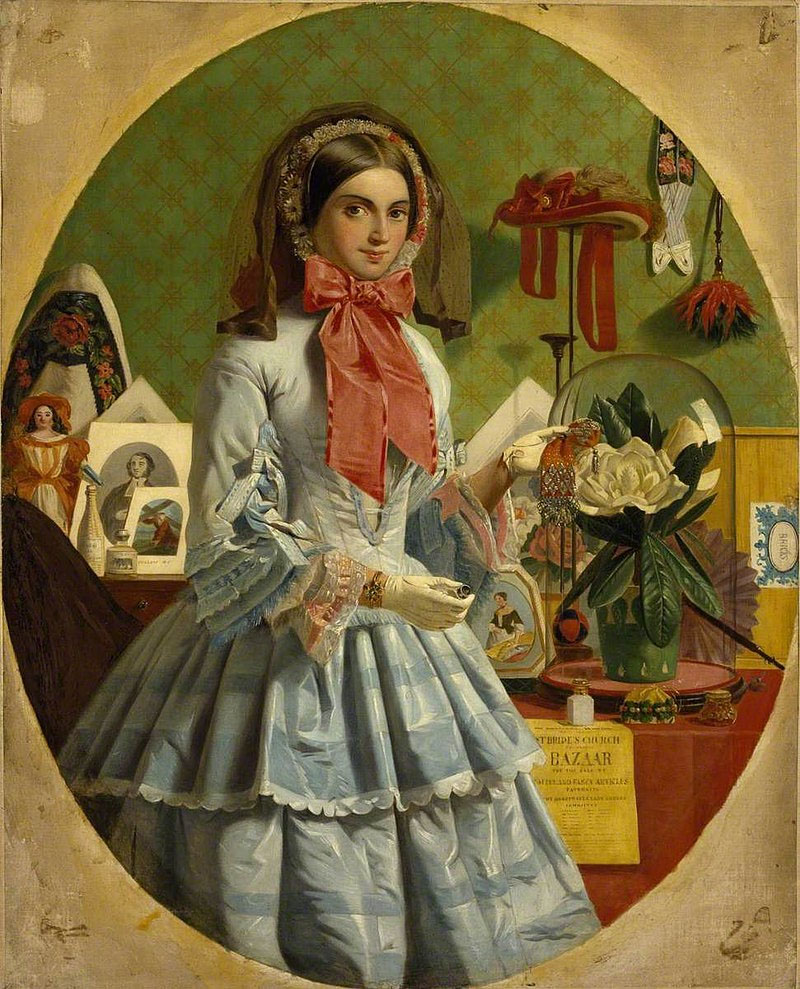
The sculptor Thomas Woolner (1825-1892) was also a part of the Brotherhood. Woolner was born in Suffolk but spent time in Australia before returning to Britain. Woolner mostly sculpted busts and sculptures of famous men such as “Sir Thomas Stamford Bingley Raffles.” However, additionally, Woolner was a writer and poet in his later years. In the 1880’s he wrote three long stories. Woolner died in London, England in 1892.
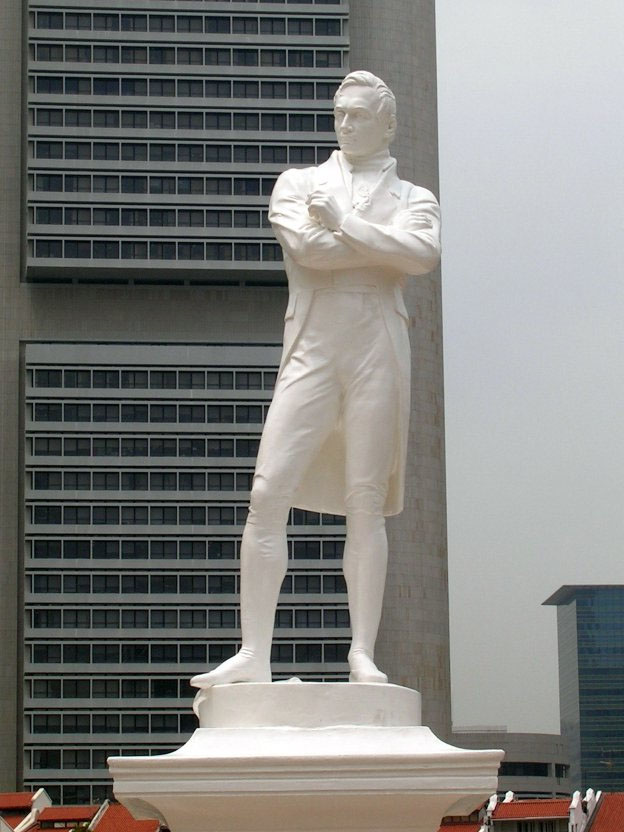
Another of the loosely associated artists was Ford Madox Brown (1821-1893), whose most famous painting “Work” (1852-1865) shows his preoccupation with Pre-Raphaelite art. Ford Madox Brown also painted “The Last of England” (1885), which shows a couple emigrating from England. It is thought that this was loosely based on the story of sculptor Thomas Woolner, who was forced to emigrate to Australia. Ford Madox Brown combined his Pre-Raphaelitism with a dedication to earlier British artists such as William Hogarth (1697-1764).
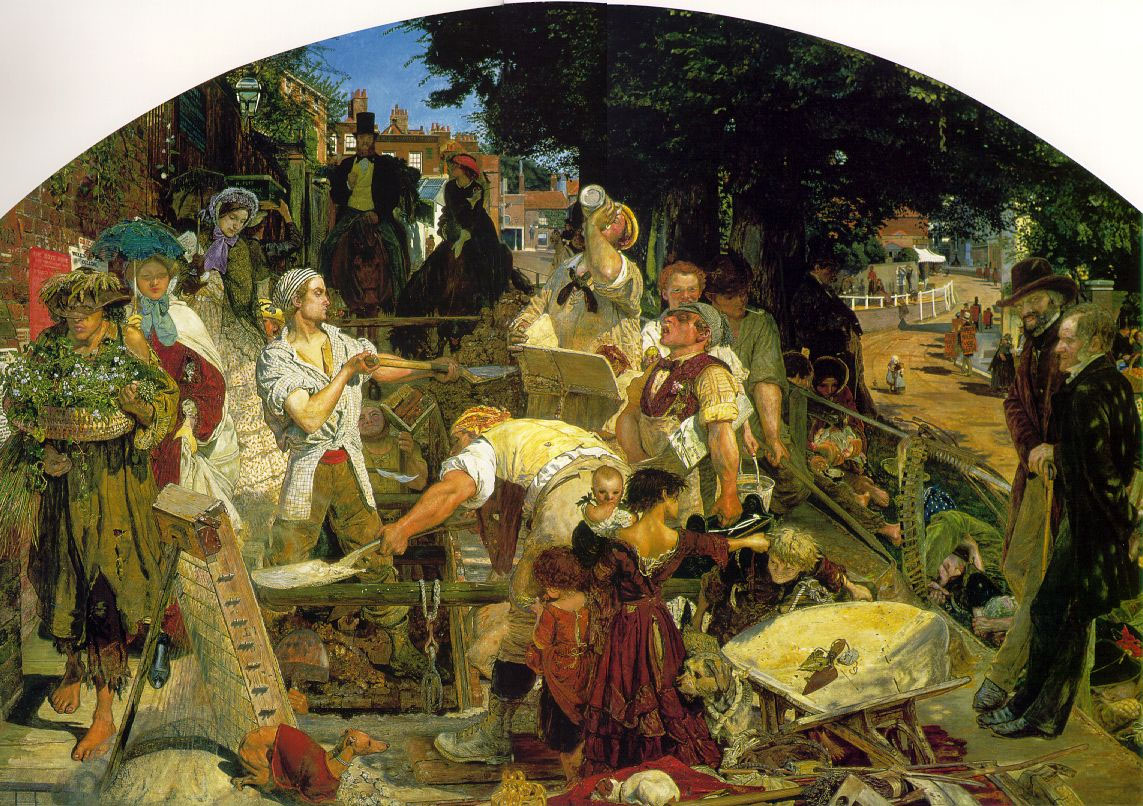
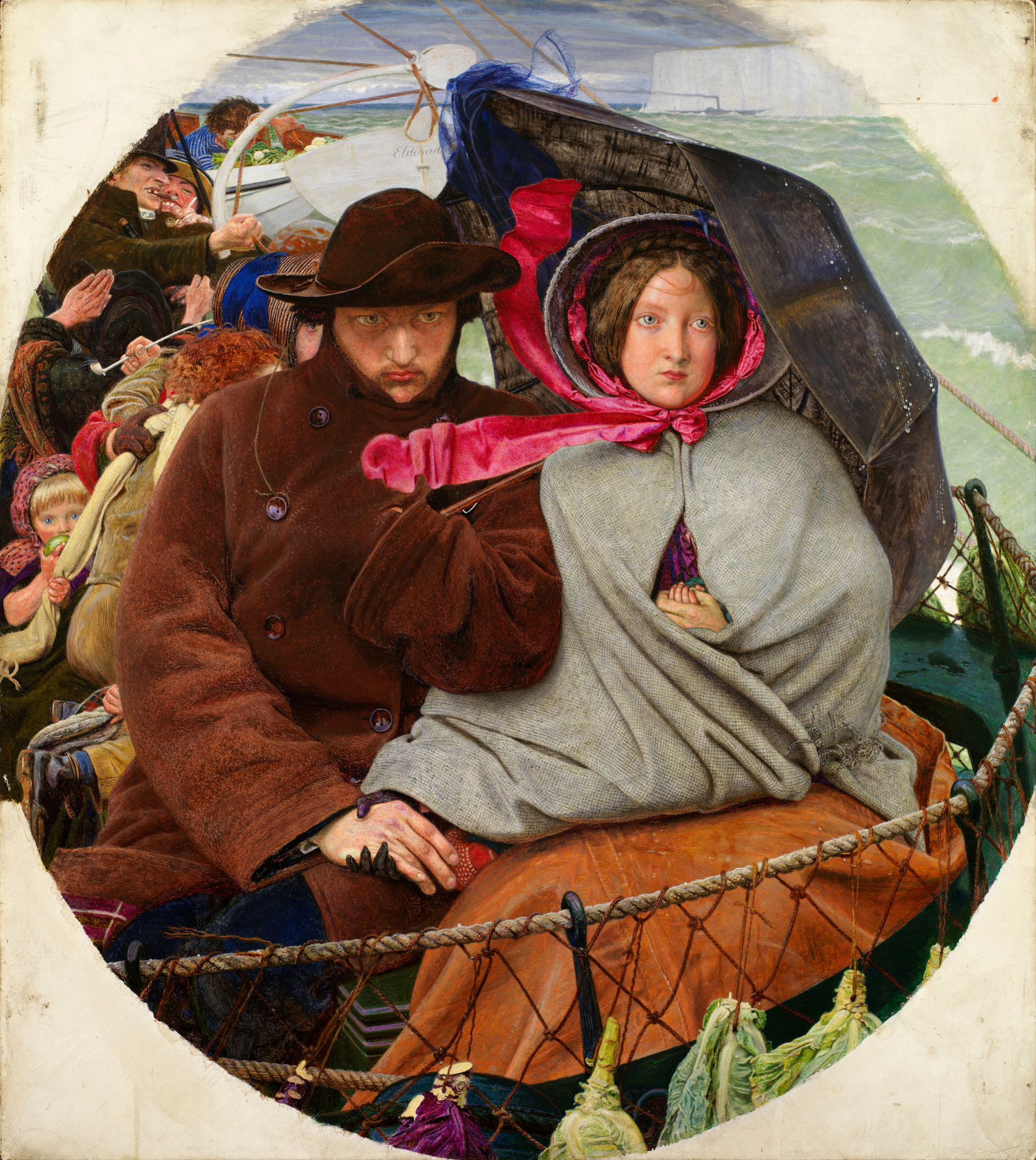
John William Waterhouse (1849-1917) was also influenced by the PRB. Waterhouse fits within the Pre-Raphaelite canon. Waterhouse was born in Rome, but moved to London, England early on and eventually attended the Royal Academy. Waterhouse’s earlier works were academic leaning, but he later picked up a similar style to Rossetti, Millais and Hunt. One of Waterhouse’s more famous works is entitled “The Lady of Shallot,” (1888) and depicts the characters of Lord Alfred Tennyson’s poem of the same title.
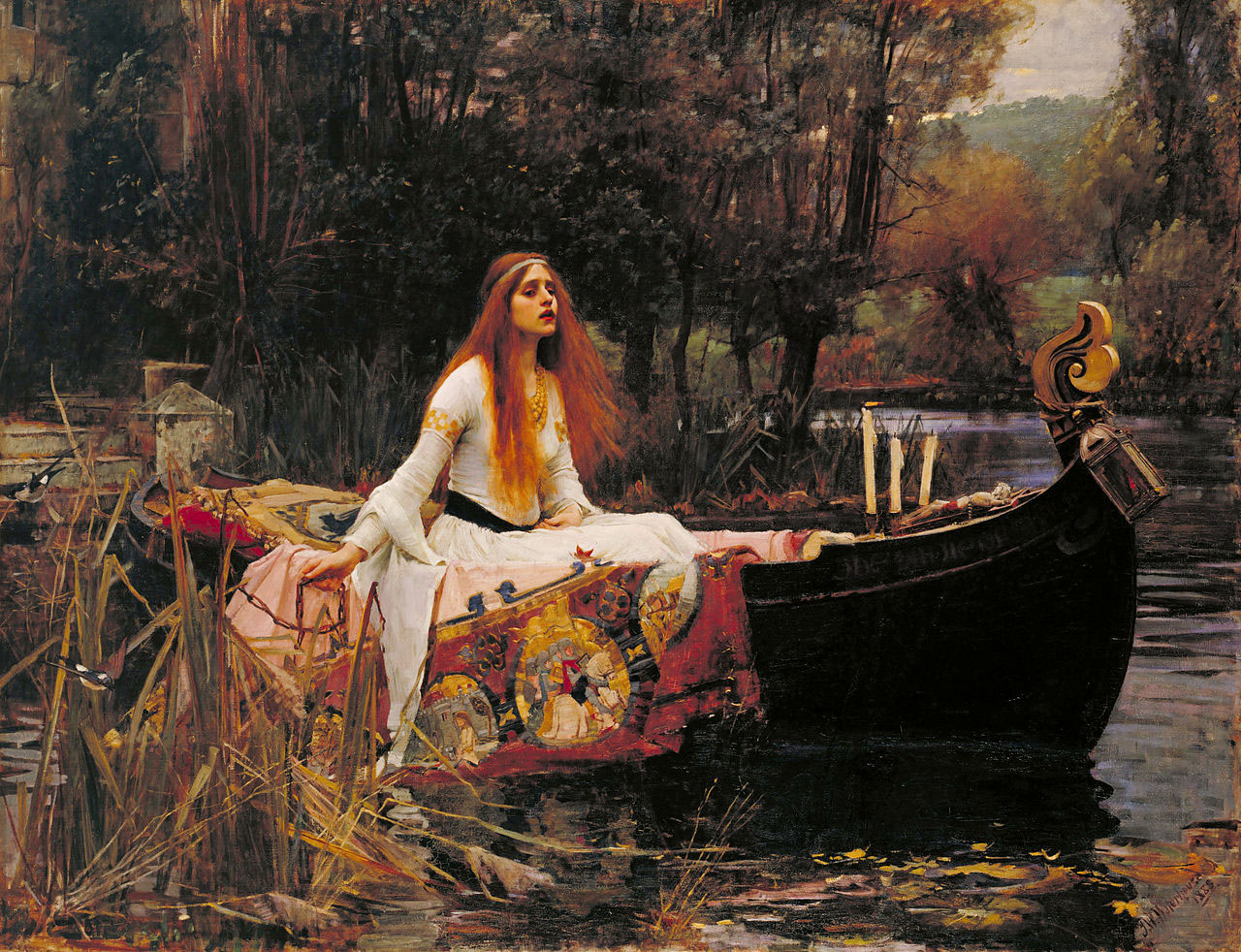
Highly intellectual critic, John Ruskin, was a Victorian writer who dealt in a myriad of subjects from Math to Art. Ruskin responded happily to PRB because their newly designed compositions were formed around a dedication to truth in nature. Ruskin became embroiled in scandal when his wife Effie Gray fell for Millais, who Ruskin had commissioned to paint his portrait. Eventually, Millais and Gray were married after her marriage to Ruskin was annulled due to lack of consummation. After that, Ruskin no longer spoke well of Millais work, but continued his support of Rossetti and Hunt.
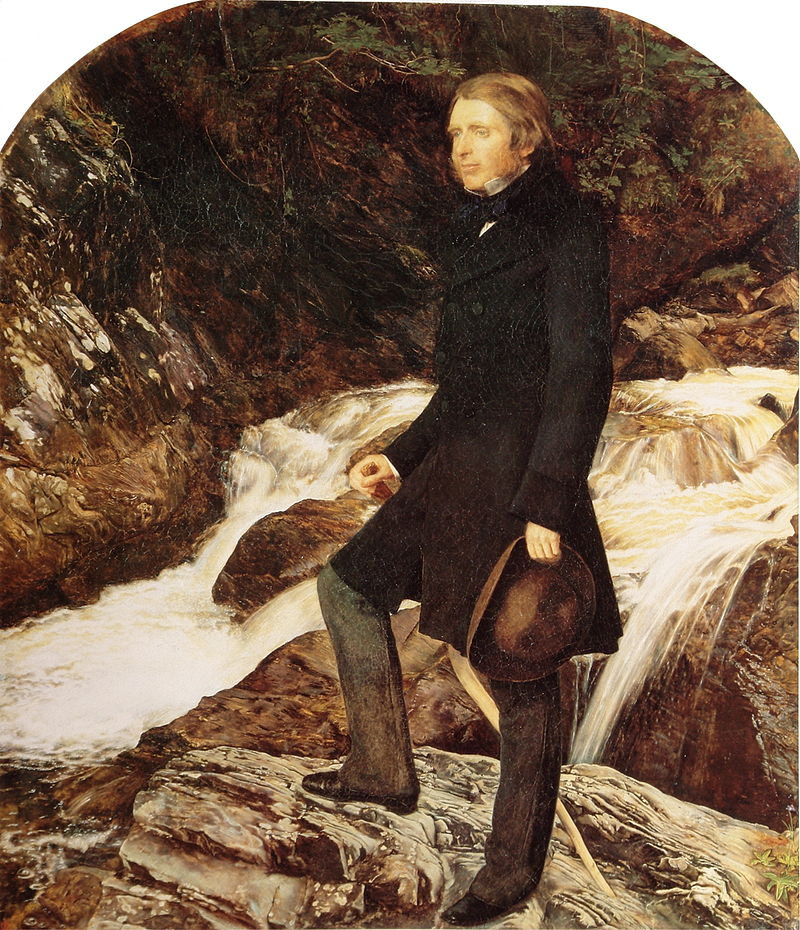
Pre Raphaelite Brotherhood (PRB) Art Characteristics
Pre-Raphaelite Brotherhood Art Characteristics include: vivid detail, symbolism and tight brushstrokes. The artists of the Pre-Raphaelitism eschewed the looser style influenced by Sir Joshua Reynolds and others in the Royal Academy. Instead, Pre-Raphaelite painting techniques created works that mimicked medieval art. Their tight brushstrokes, vivid color and lack of correct perspective became characteristic of Pre-Raphaelitism.
The PRB redefined beauty in art. Their red-hair heroines were problematic amongst their English Victorian audience, who associated red hair with a sinful nature.
Moreover, The PRB incorporated a unique style of frame as part of their whole aesthetic. The flat-ornamental gold frames often incorporated organic plant shapes as well as geometric symbols. Dante Gabriel Rosetti and Ford Maddox Brown began designing their own frames for use on their paintings in 1850.
The paintings themselves had extreme detail and rich, bright colors which created a Jewel-Like surface quality. In fact, Hunt and Millais painted thin glazes over a wet white background. This enhanced the clarity of the scene and the brushstrokes were carefully hidden. Unlike earlier British artists, such as Joshua Renyolds and David Wilke, the PRB refused the overuse of bitumen. Bitumen was a semi-solid form of petroleum which artists had begun to use to create cloudy areas of darkness in the background of paintings.
Pre Raphaelite Artwork
Below find 5 famous artworks from members of the Pre-Raphaelite Brotherhood:
“Ophelia” by John Everett Millais
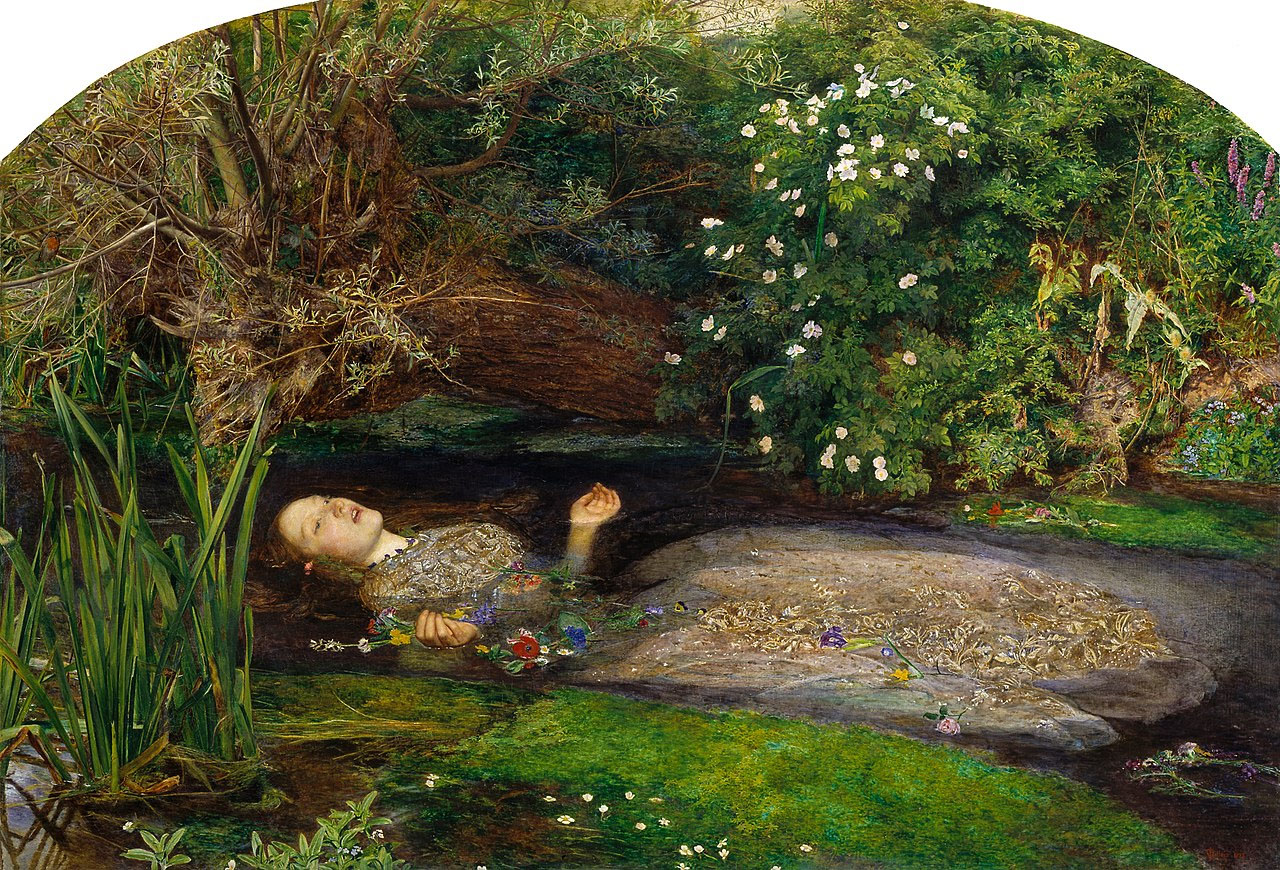
First, John Everett Millais’s oil on canvas entitled “Ophelia,” was completed between 1851-1852. Ophelia was a protagonist from William Shakespeare’s (1564-1616) Hamlet. Ophelia was Hamlet’s love interest but drowned herself after Hamlet killed her father. The flowers Millais chose were representative of Shakespeare’s description of the garland from Hamlet. One of the flowers represented is the poppy, which in Victorian art and literature often represents death and sleep. Another flower Millais chose to display was the violet, which represents faithfulness. Millais posed Elizabeth Siddal in the bathtub to complete the composition. The story goes that Siddal did not tell Millais that the lamps that were heating the water had gone out and the water had become ice cold. Siddal was ill after the event and her husband Dante Gabriel Rossetti, sued Millais for her medical bills. “Ophelia” was initially exhibited at the Royal Academy, and it is now on view at the Tate Britain in London.
“The Awakening Conscience” by William Holman Hunt
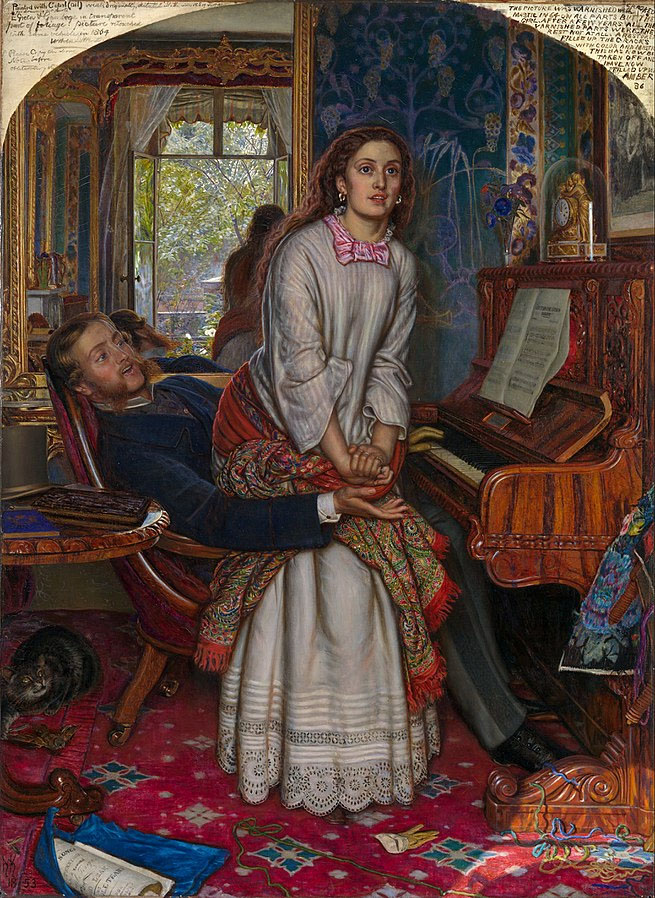
William Holman Hunt’s “The Awakening Conscience” was painted in 1853. The oil on canvas features a woman who is standing up from her previous position seated on the lap of the gentleman behind her. Symbolically Hunt portrays a woman who is rising from a depraved or fallen state. She has heard the call of Christ and gazes outside of the canvas towards a “better” life. We can tell from the mirror in the back of the canvas that she is gazing out of a window at nature. This suggests that nature is the ultimate view of God and represents the ultimate truth. Hunt used symbolic references to tell the story. For example, the discarded glove, and cat playing with bird suggest infidelity and adultery.
“Dante’s Dream” by Dante Gabriel Rossetti
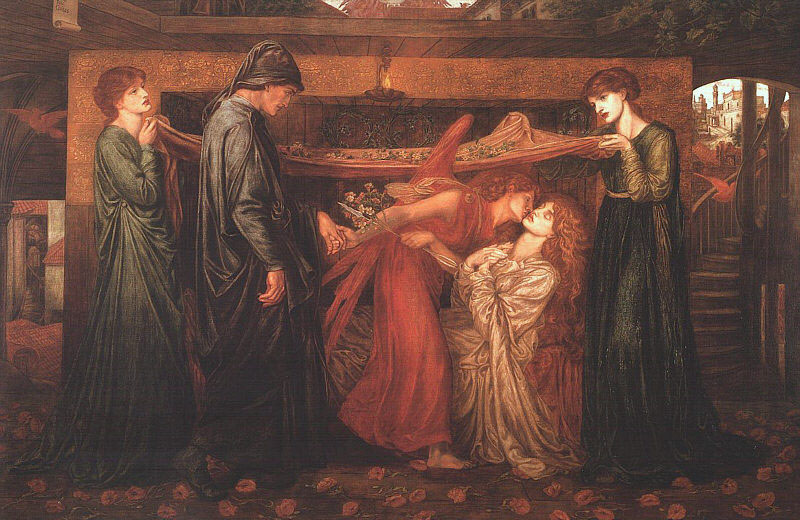
Dante Gabriel Rossetti took inspiration from his namesakes’ poem La Vita Nuova for his oil on canvas “Dante’s Dream” (1871). Rossetti shared a first name with 14th century poet, Dante Alighieri (1265-1321), from whose poems Rossetti frequently took inspirations for his paintings. Dante is depicted in his dream being led to the deathbed of his lover Beatrice, portrayed by frequent model for Rossetti, Jane Morris. Rossetti’s image is full of symbolism in the colors, flowers and actions of the attendants.
“Bocca Baciata” by Dante Gabriel Rossetti
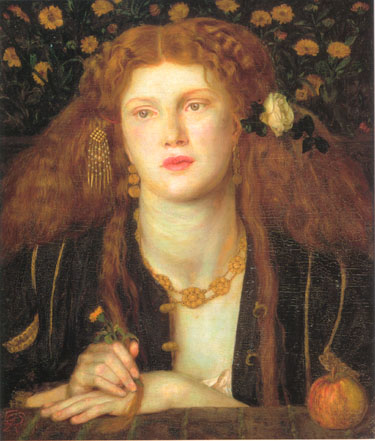
“Bocca Baciata” by Dante Gabriel Rossetti was shown during the Royal Academy exhibition of 1859. The title refers to an Italian proverb and translates to “the mouth which has been kissed.” The title suggests a sexual act has occurred. The sumptuous oil on canvas depicts Rossetti’s model Fanny Cornforth potentially as an object of sexual desire, but the narrative is confused in that the act has already occurred.
“Christ in the House with his Parents” by John Everett Millais
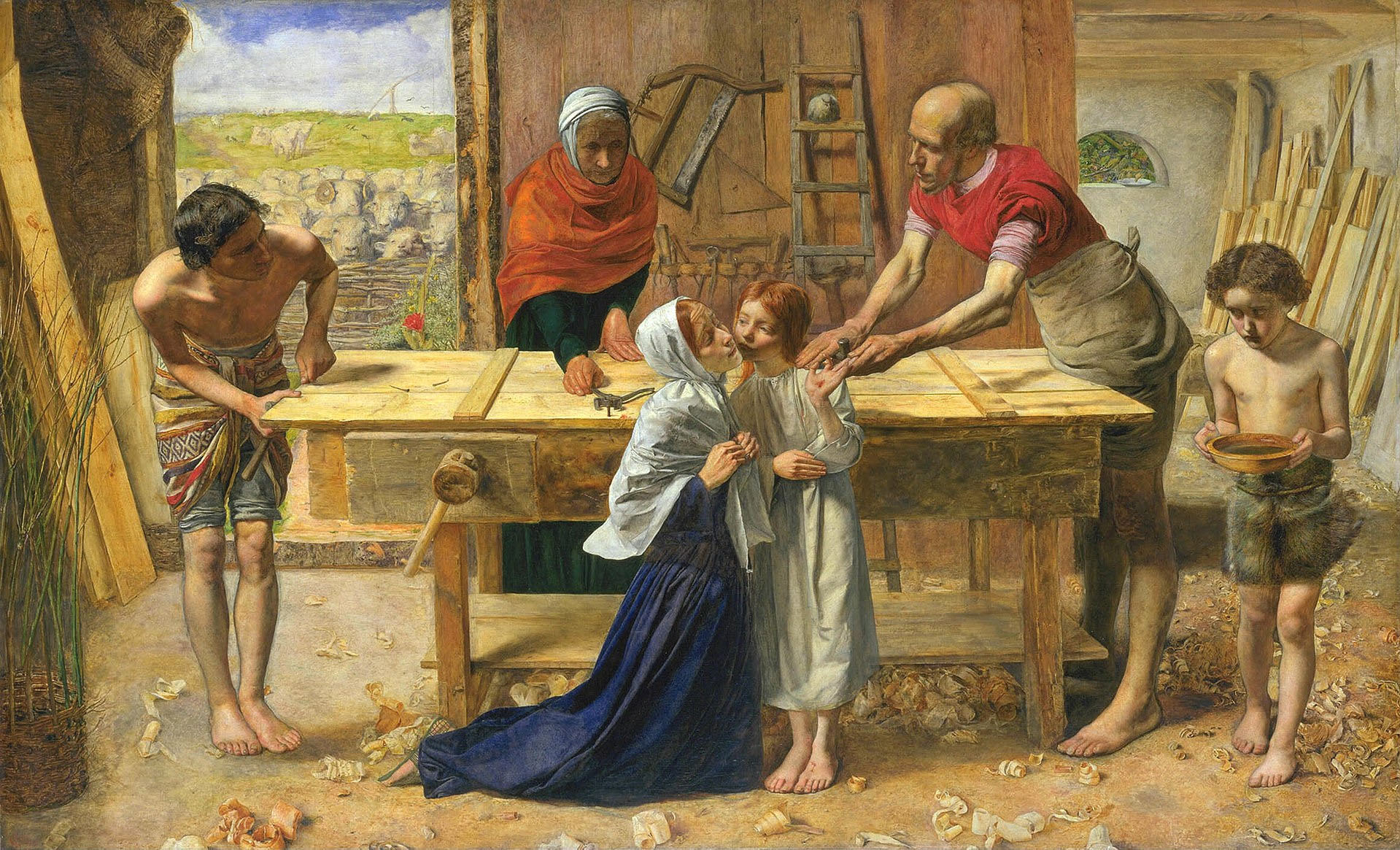
John Everett Millais’s “Christ in the House with His Parents” was completed in 1850. The painting represents Christ and his family in Joseph’s workshop. Though no title was initially given the work was accompanied by a verse from Zachariah detailing the image. Christ has hurt himself and is bleeding. The nail, which caused Christ’s injury foreshadows his death and crucifixion. Mary and Joseph tend to their son, who’s central position in the canvas highlights the importance of the Christian narrative. John the Baptist, Christ’s cousin, brings a bowl of water to aid his parents in taking care of Christ. Millais’s intense mimetic detail suggests the viewer is seeing into Joseph’s studio as it would have existed in biblical times. However, the perspective utilized replicates a 15th century effect. The painting is rife with Christian symbolism. For instance, the ladder in the background represents Jacob’s ladder and the sheep in the background symbolize the Cristian flock.
Female Models of the Pre Raphaelite Brotherhood
Female Models of the Pre-Raphaelite Brotherhood include Elizabeth Siddal, Fanny Cornforth and Jane Morris.
Elizabeth Siddal

Elizabeth Siddal was a poet and member of the Pre-Raphaelites. Siddal was also married to Dante Gabriel Rossetti and often sat as a model for him. One of the most famous portraits of her “Beata Beatrix,” was completed posthumously. Siddal’s husband Dante Gabriel Rossetti painted this work over 6-7 years starting around 1864 and completing it around 1870. “Beata Beatrix” shows Siddal as Beatrice at the moment of her death from the poem by Dante Alighieri, La Vita Nvova.
Jane Morris
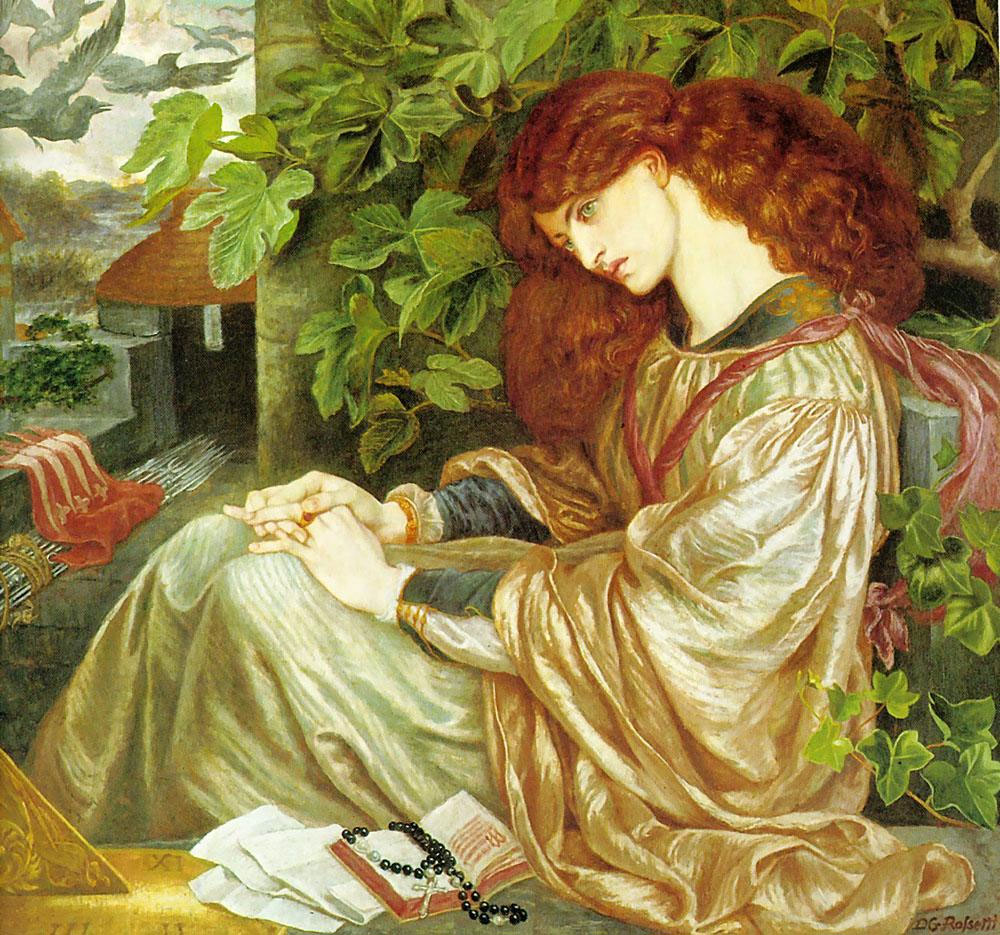
Jane Morris was born Jane Burden in 1839. Morris grew up in Oxford to poor parents. Jane Morris was a frequent model for the Pre-Raphaelites. Morris was married to William Morris, who considered her a muse. Morris helped her husband William as an embroiderer for many of the patterns created by Morris & Co. Morris maintained a romantic relationship with Dante Gabriel Rosetti and was a model and muse for Rosetti. Morris modeled for Rosetti’s paintings: “Pia de’ Tolomei,” “Proserpine,” and “The Day Dream.” Morris also modeled for pictures by William Morris, stained Glass images by Edward Burne-Jones, and paintings by Evelyn de Morgan.
Fanny Cornforth

Fanny Cornforth was born in 1835 and by 1856 had begun a relationship with Dante Gabriel Rossetti. Cornforth was the model for many red chalk drawings by Rossetti. Cornforth also modeled for Edward Burne-Jones and J.R. Spencer Stanhope (1829-1908). Stanhope was another loosely associated artist whose niece was Evelyn de Morgan. Cornforth famously sat for “Bocca Baciata” and is represented in “Lady Lilith” by Rosetti. Other female models used by the Pre-Raphaelites include: Effie Gray, Sophy Gray, Annie Miller, Marie Spartali Stillman, Alexa Wilding, Maria Zambaco, Dorothy Dene, Fanny Eaton, and Ruth Herbert. Additionally, The Pre-Raphaelite artists often used family and friends as models.
Who influenced the Pre Raphaelite Brotherhood?
The Brotherhood was influenced by Quattrocento Italian Art and the German Nazarene Movement. First, Pre-Raphaelitism was influenced by early Renaissance art Italian artist of the Quattrocento. The Quattrocento was the period of art between 1400-1499 and encompasses art prior to Michelangelo and Raphael. These artists and the mannerists of the mid-late Renaissance had a mechanical approach to figuration. The Pre-Raphaelites were influenced by English Romantic poets Lord Alfred Tennyson and John Keats. Second, During the 19th century, a group of German Romantic Painters started the Nazarene Movement. It was named the Nazarene Movement, because it referred to the biblical manner of dress and hair style that the Nazarene painters used in their works. The Nazarene painters also dressed themselves in a biblical manner. The Nazarene movement was founded by artists Johann Fredrich Overbeck (1789-1869), Franz Pforr (1788-1812) and Johann Konrad Hottinger (1764-1841), along with other classmates from the Academy of Fine Arts Vienna. This previous art movement inspired Pre-Raphaelitism because of their emphasis on honest expression.
Another huge influence on the Brotherhood was British Romanticism and early 19th century artistic movement which emphasized nature. Many artists such as John William Waterhouse, and Henry Wallis, were loosely associated with both movements.
Who did the Pre Raphaelite Brotherhood influence?
The Pre-Raphaelite Brotherhood influenced many later British artists and artistic movements. The Pre-Raphaelites strongly influenced William Morris (1834-1896) and the Arts and Crafts Movement. The Arts and Crafts Movement was a trend in decorative arts which spread across England in the latter half of the nineteenth century. Morris was the founder of Morris & Co, which designed home furnishings and decorative arts for Victorian England. Morris set out to transform the domestic interiors of Victorian England. Morris created wallpaper designs and furniture with symbols from the natural world. Morris’s plant-based forms drew on the Pre-Raphaelite principles of closely observing nature. Like the Pre-Raphaelite’s Morris’s artworks shared qualities with medieval art. Morris’s wallpapers were an integral part of the Arts and Crafts Movement in England.
The Pre-Raphaelite brotherhood inspired the British artists of the Aesthetic Movement. Heralded by Theophile Gautier (1811-1872), and his L’art pour L’art, statement, the Aesthetic Movement claimed art should be created just for its own beauty not for religious or narrative motivations. The Aesthetic Movement focused mainly on beauty in the world and suggested that art’s sole purpose was to please the eye and senses. Artists of the Aesthetic Movement often dabbled in the decorative arts filling their homes with art and beauty. The Aesthetic Movement began roughly around 1860 and lasted until the turn of the century.
Within the art of Edward Burne-Jones (1833-1898), one can see the Pre-Raphaelite influence. Burne-Jones was born in Birmingham, England in 1833 and he studied at Birmingham School of Arts and Exeter College in Oxford. Burne-Jones married Georgiana MacDonald (1840-1920), for whom he often sketched little drawings. Georgiana was painter in her own right. The Flower Book is a compendium created posthumously by Georgiana of small sketches that Burne-Jones left for her around the house that were each based on a flower. Together the two had a son named Philip (1861-1926), who would also become an artist in the Aesthetic circle. Burne-Jones was associated with Rossetti, Millais and Hunt, but his art differed. Burne-Jones had a chalkier and looser style than the Rossetti, Millais and Hunt, creating a dream-like quality to his paintings. Burne-Jones had read Thomas Malory’s (1415-1471) Le Morte d’Arthur, which told the tales of King Arthur and Arthurian Legend. Burne-Jones utilized Arthurian legends as subjects for his paintings and one of his most famous works was the painting “The Beguiling of Merlin” (1874). Burne-Jones designed theatre sets, stained glass for William Morris & co., and painted watercolors. Burne-Jones is also well known for his four-painting series “The Legend of Briar Rose,” (1890) telling the story of Sleeping Beauty.
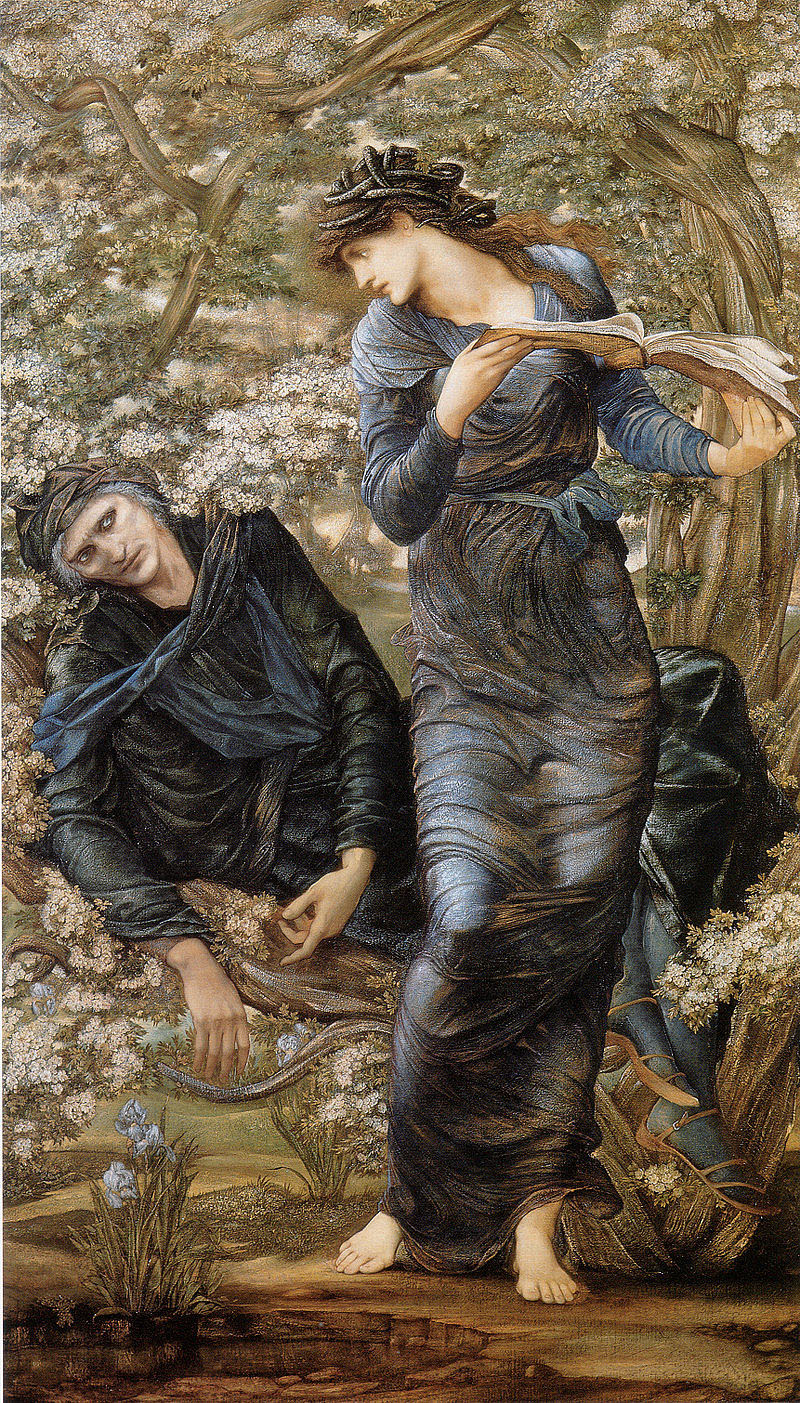
Some other loosely associated artists include: John Collier (1850-1934), Arthur Hughes (1832-1915), James McNeill Whistler (1834-1903), Lawrence Alma-Tadema (1836-1912) and Frank Bernard Dicksee (1853-1928). To conclude, the Pre-Raphaelite Art Movement was heavily influential for the Victorian art world and the future of modern art. In addition to Morris, Burne-Jones and the other artists who followed in the Rossetti’s, Millais’s, and Hunt’s footsteps, include, Henry Wallis (1830 -1916) and Walter Howell Deverell (1827–1854). Henry Wallis has been called the forgotten Pre-Raphaelite. Deverell who was inspired by their art and philosophy.
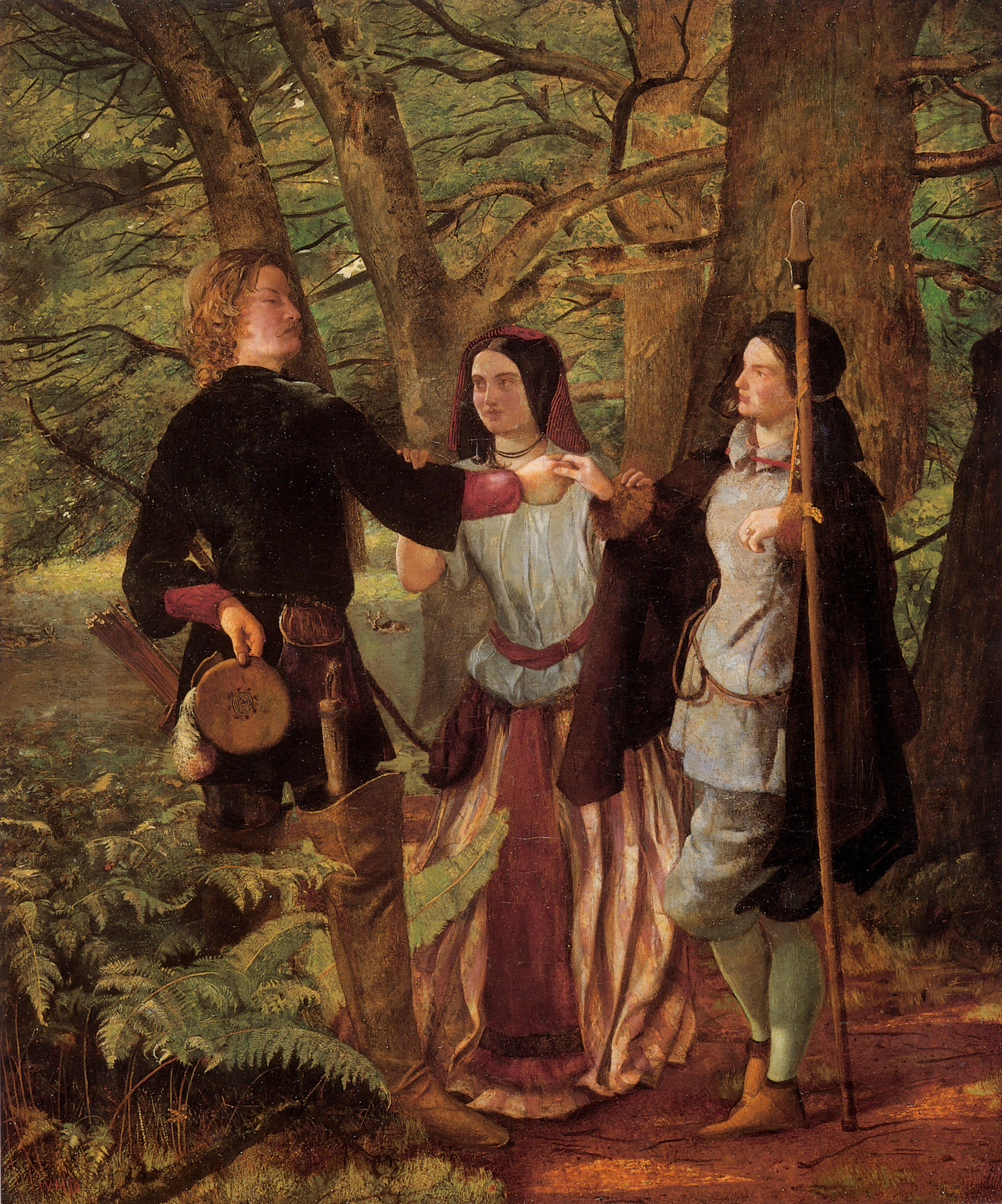
Late 19th century symbolism may not seem connected to the PRB movement because it was a reaction against realist and naturalist elements in art. However, Rossetti’s later works inspired the French, Russian, and Belgian symbolists because they contained metaphorical images and connections to poetry.
Citations
- Calloway, Stephen and Lynn Federle Orr. The Cult of Beauty: The Aesthetic Movement 1860-1900. New York: Harry N. Abrams, 2011.
- Gaunt, William (1975). The Pre-Raphaelite Tragedy (rev. ed). London: Cape.
- Pre-Raphaelitism and Medievalism in the Arts. United Kingdom: E. Mellen Press, 1992.
- Ramm, John (2003). “The Forgotten Pre-Raphaelite: Henry Wallis”, Antique Dealer & Collectors Guide, 56 (March/April), p. 8-9
- Staley, A. and Newall, C. (2004) Pre-Raphaelite Vision: Truth to Nature, London, Tate.
